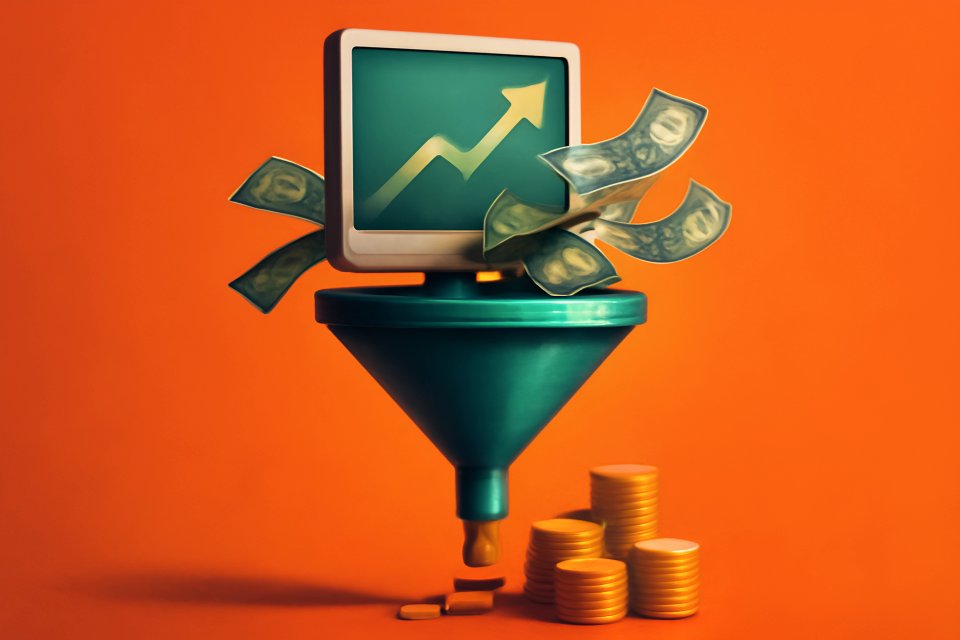
That ping. The notification hits your phone, and a jolt of pure adrenaline follows: Payment Received. It’s the validation, the proof that your late nights, your sacrificed weekends, your relentless hustle—it’s all paying off. But then, a cold wave of dread washes over you. Now you have to open the spreadsheet, log the income, update the project tracker, calculate the tax savings, and make sure that invoice is marked PAID.
This is the hustle tax. It’s the silent, soul-crushing administrative work that steals the joy from your wins. It’s the nagging fear that you’ve missed a receipt, under-billed a client, or aren’t saving enough for the taxman. What if you could eliminate it forever?
Forget the idea that financial automation is some complex, expensive system reserved for big corporations. This is your secret weapon. This is how you buy back your time, your mental energy, and your peace of mind. This automating side hustle finances guide is your step-by-step blueprint for building a hands-off financial workflow, so you can get back to doing what you actually love: growing your empire.
Why Financial Automation for Side Hustles Isn't a Luxury—It's a Necessity
Let’s be brutally honest. You didn’t start a side hustle to become a part-time bookkeeper. Every minute you spend wrestling with a spreadsheet is a minute you’re not spending on marketing, serving clients, or creating your next product. This isn’t just about convenience; it’s about survival and growth.
Reclaim Your Most Valuable Asset: Time
How much is your time really worth? If you spend just five hours a month on manual financial tasks—invoicing, expense tracking, updating books—that’s 60 hours a year. That’s a full week and a half of work you could have spent landing a new high-ticket client or simply recharging your batteries. As experts at Hubifi point out, automating financial controls is essential for building a resilient backbone for future growth, transforming tedious data entry into strategic, forward-thinking action.
Think of automation as the best employee you’ll ever hire. It works 24/7, never makes a mistake, and pays for itself in the first few hours you reclaim. This isn't just about efficiency; it's about fundamentally changing your relationship with your business, allowing you to focus on high-value activities that actually increase your income.
Eliminate Costly Human Error
No matter how meticulous you are, you’re only human. A single typo in a spreadsheet formula or a forgotten receipt can have a domino effect, leading to you under-billing a client or, worse, facing a surprise tax bill. Manual data entry is notoriously prone to mistakes; studies have shown that even in carefully managed spreadsheets, the error rate can be as high as 1-2%.
When you automate, you remove the variable of human error from the equation. Invoices are generated with perfect accuracy, expenses are categorized correctly every time, and your profit and loss statements reflect the undeniable truth of your business. This level of precision isn't just professional; it's a powerful form of financial security.
Gain Crystal-Clear Financial Clarity, Instantly
Do you know your exact profit margin right now? What about your month-over-month revenue growth or your biggest expense category? For most side hustlers, answering these questions requires a frantic deep dive into bank statements and spreadsheets.
An automated system gives you a real-time dashboard of your business’s financial health. With a single click, you can see your cash flow, track your profitability, and make smarter, data-driven decisions. As noted in a review by Farseer, modern finance automation software provides a unified financial view that empowers you to move from reactive bookkeeping to proactive strategy. This clarity is power—the power to know when to invest, when to cut costs, and how to price your services for maximum profit.
Make Tax Season a Breeze (Seriously)
For many freelancers and side hustlers, tax season is a four-letter word. It’s a chaotic scramble to find every receipt, categorize a year's worth of transactions, and pray you’ve saved enough to cover the bill. It doesn’t have to be this way.
With an automated system, your expenses are already categorized, your income is perfectly logged, and your tax savings have been automatically set aside with every payment you receive. Instead of a week-long nightmare, tax preparation becomes a 30-minute task of printing a few reports. This is the ultimate peace of mind, turning a season of stress into a simple, streamlined process.
The 5 Pillars of an Automated Financial System
Feeling overwhelmed? Don't be. The secret to financial automation for side hustles is breaking it down into five manageable pillars. Master these, and you’ll have a system that runs itself, giving you the freedom to focus on what truly matters.
Pillar 1: Income & Payment Processing
This is where the money comes in. The goal is to make getting paid as seamless and hands-off as possible. An automated system connects directly to a payment processor like Stripe or PayPal, so when a client pays an invoice, the funds are deposited and the transaction is automatically recorded in your accounting software. No more manual entry, no more checking your bank account to see if a payment has cleared.
Pillar 2: Expense Tracking & Categorization
Stop hoarding a shoebox full of receipts. By linking your dedicated business bank account and credit card to your accounting software, every single business expense is automatically imported. You can then set up rules to instantly categorize recurring charges, like your Adobe subscription or your web hosting fees. This pillar alone can save you hours of tedious work each month.
Pillar 3: Invoicing & Client Follow-Up
Chasing late payments is awkward, time-consuming, and drains your creative energy. Automation handles this for you. You can set up recurring invoices for retainer clients and create automated email reminders that are sent to clients when an invoice is due or overdue. This maintains your professionalism and ensures a steady, predictable cash flow without you having to play the part of a debt collector.
Pillar 4: Budgeting & Profit Tracking
How do you know if you’re actually profitable? This pillar is where you automate invoicing and budgeting to get a crystal-clear picture. Your system automatically subtracts your categorized expenses from your recorded income, showing you your true profit margin in real-time. This allows you to see which services are most profitable and where you might be overspending, empowering you to build a more sustainable business.
Pillar 5: Tax Savings & Preparation
This is the pillar that protects your financial future. A truly automated system will set aside a percentage of every single payment you receive into a separate savings account earmarked for taxes. When tax time rolls around, the money is already there, waiting for you. This simple act of automation removes the single biggest source of financial anxiety for most self-employed individuals.
Your Toolkit: The Best Side Hustle Finance Tools for Every Budget
Ready to build your system? The right side hustle finance tools are the engine of your automated workflow. The good news is that there are powerful options available for every stage and budget, from brand-new hustlers to rapidly scaling entrepreneurs.
All-in-One Accounting & Invoicing Hubs
These platforms are the command center for your financial world, combining invoicing, expense tracking, and reporting into one seamless interface. According to a review by Perimattic, tools like QuickBooks Online are designed to handle repetitive financial tasks efficiently, freeing you up to focus on growth. Your choice will depend on your specific needs and budget.
| Tool | Best For | Key Feature | Price Point |
|---|---|---|---|
| Wave | Beginners | 100% free invoicing & accounting | Free |
| QuickBooks Self-Employed | Solopreneurs | Mileage tracking & quarterly tax estimates | $ |
| FreshBooks | Growing Hustles | Best-in-class invoicing & client management | $$ |
Dedicated Expense Tracking Tools
If your business involves a lot of physical receipts for travel, meals, or supplies, a dedicated expense tracker can be a lifesaver. These apps use your phone’s camera to digitize receipts instantly.
-
Tool Spotlight: Expensify
Its
SmartScanfeature is legendary. Just snap a photo of a receipt, and it automatically transcribes the merchant, date, and amount, saving you from ever having to do manual data entry again.
Smart Tax Savings Tools
These tools are designed to solve the freelancer's biggest headache: saving for taxes. They connect to your bank account and intelligently manage your money for you.
-
Tool Spotlight: Catch.co
This innovative platform acts as your personal payroll system. When you get paid, it automatically routes a percentage of that income toward taxes, retirement, and even paid time off, giving you the security and benefits of a traditional job.
The "Glue" That Connects Everything
What if you want to create a custom workflow that your primary tool doesn't support? That's where integration platforms come in.
-
Tool Spotlight: Zapier
Zapier is the ultimate automation connector. You can use it to create "Zaps" that link different apps together. For example, you could create a Zap that automatically adds a new client from a Stripe payment to your email marketing list, creating a completely custom and powerful workflow. This level of integration is a key feature highlighted by Savant Labs in their review of top finance automation tools.
Building Your Automated Financial Workflow: A Step-by-Step Guide
You have the pillars and the tools. Now it’s time to put it all together and build your hands-off financial machine. This is where the magic happens.
Step 1: The Foundation - Separate Your Finances
This is the most important, non-negotiable first step. Open a dedicated business bank account and get a business credit card. Commingling your personal and business finances makes automation nearly impossible and creates a nightmare for tax season. As we cover in our guide on how to launch a profitable side hustle on a budget, establishing this separation from day one is crucial for long-term success.
Step 2: Choose Your "Financial Hub"
Select one of the all-in-one tools mentioned earlier—like Wave, QuickBooks, or FreshBooks—to serve as your central source of truth. This will be the command center where all your financial data lives. Don't overthink it; pick the one that best fits your current budget and needs. You can always upgrade later as your business grows.
Step 3: Connect Your Accounts
This is your first "aha!" moment. Follow the instructions in your chosen software to securely link your new business bank account and credit card. Once connected, the software will automatically pull in all your transactions. You’ll see months or even a year's worth of financial data organized in seconds.
Step 4: Set Up Your Rules & Recurring Tasks
Now you teach your system how to think for you.
- For Expenses: Go through your transactions and create rules. If you see a charge from
Adobe Creative Cloud, create a rule to always categorize it asSoftware & Subscriptions. - For Invoicing: If you have clients on a monthly retainer, set up recurring invoices that are sent automatically on the first of every month. Turn on automated payment reminders for all invoices to eliminate the need for manual follow-up.
- For Taxes: Use your software’s built-in feature or a tool like Catch.co to automatically transfer
25-30%of every single deposit into a separate high-yield savings account labeled "Tax Savings."
Step 5: Schedule Your "CEO Date" - The 30-Minute Monthly Review
Automation doesn’t mean abdication. You are still the CEO of your business. Schedule a recurring 30-minute meeting on your calendar each month—your "CEO Date"—to review your financial dashboard. Look at your profit and loss statement, check for any uncategorized transactions, and assess the overall health of your business. This small habit ensures you stay in control and can make strategic decisions based on real data, a key principle in our guide to productivity mastery for solopreneurs.
Conclusion: Your New Reality—More Profit, Less Paperwork
You started this journey drowning in a sea of spreadsheets, receipts, and financial anxiety. By following this guide, you’ve built a system—a machine that works for you, freeing up your time, eliminating stress, and giving you the crystal-clear financial insight you need to grow your side hustle into a sustainable career. This is no longer about just making money; it’s about building a business that serves your life, not the other way around.
Remember, financial management isn't some innate talent you're born with; it's a skill you build with the right systems. You have now laid the foundation for a more scalable, profitable, and enjoyable business. You've taken control. Now, you can focus on the big picture, confident that your finances are running smoothly in the background, paving the way for you to transition your side hustle into a sustainable online career.
What's the #1 financial task you're most excited to automate after reading this guide? Share your plan in the comments below.














